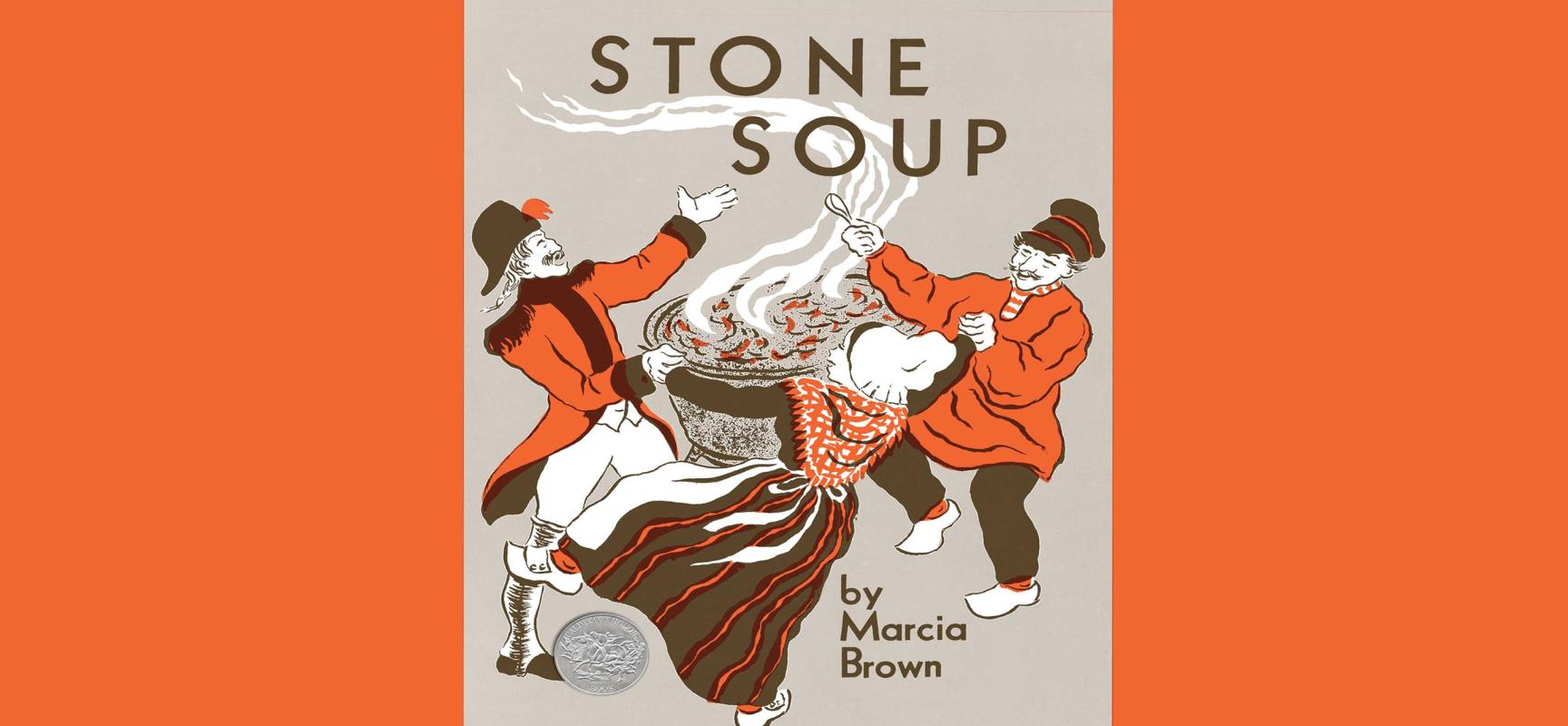Stone Soup AI

by Alison Gopnik (UC Berkeley)
For some time, I’ve argued that a common conception of AI is misguided. This is the idea that AI systems like large language and vision models are individual intelligent agents, analogous to human agents. Instead, I’ve argued that these models are “cultural technologies” like writing, print, pictures, libraries, internet search engines, and Wikipedia. Cultural technologies allow humans to access the information that other humans have created in an effective and wide-ranging way, and they play an important role in increasing human capacities (see Yiu, Gopnik, et al., 2023). A good way to capture this idea is through the story of stone soup.
“Stone Soup” is a very old folktale, found in different variations around the world. Three hungry travelers show up in a village looking for food. “We don’t have any to spare,” say the villagers. “That’s all right,” the travelers say. “We will make stone soup.” They take out a large cauldron and fill it with water and a few carefully chosen stones. As it all heats and bubbles, they say, “This will be delicious. Although, of course, stone soup is even better with a carrot and an onion.” “Wait,” says one of the villagers. “I think I might have a carrot and an onion stashed away.” And he runs to get them and add them to the soup. “This will make even better stone soup,” says one of the travelers. “Of course, when we made it for the rich men, we added some barley and buttermilk, but you can’t wish for what you don’t have.” “Wait,” says another villager. “I think I might have a bit of barley and buttermilk hidden away.” And he adds it to the soup. “When we made this for the king, he suggested adding a chicken,” say the travelers, “and that made for a truly royal soup.” “There might be a chicken in the farmyard,” says a third villager. And so it went with each villager adding a special garnish to the soup. When it was all cooked, it was indeed a truly wonderful soup. “And to think,” said the villagers, “how magical that such a soup was made from just a few stones!”
Here is a modern version of the tale. Some tech execs came to the village of computer users and said, “We have a magic algorithm that will make artificial general intelligence from just gradient descent, next-token prediction, and transformers.” “Really,” said the users, “that does sound magical.” “Of course, it will be even better and more intelligent if we add more data — especially text and images,” said the execs. “That sounds good,” said the users. “We have some extra texts and images we created stashed away on the internet — we could put those in.” “Great,” said the tech execs. “But, you know, this version still says a lot of dumb things. It would be even more intelligent if we could get humans to train it directly with reinforcement learning from human feedback.” “Sure,” said the users. “There are whole villages in Kenya that will jump at the chance.” “OK,” said the execs, “now the last thing that would really make it royally intelligent is for the users to do clever prompt engineering to ask it just the right questions in the right way.” “Sure,” said the users, “we will think hard and figure out how to prompt it.” “Good,” said the tech execs, “this will be a truly, magically intelligent machine.” “And to think,” said the users as they shelled out for the latest version, “how magical that this artificial general intelligence was made from just a few algorithms!”
To be fair, although the story is intended to be debunking, the folktale also has a positive moral that applies to AI. The collective resources of many humans can make something that no individual could, and that really is magical.


